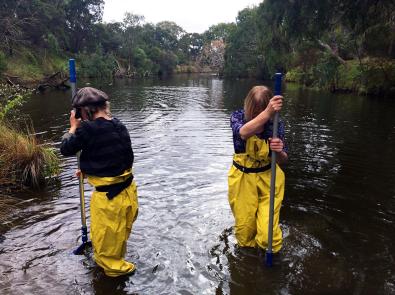Macroinvertebrates, or waterbugs, can withstand different levels of pollution – so identifying the types found in your local waterway can provide a useful indication of its health.
Waterbugs are also an important food source for animals such as platypus. By becoming a volunteer monitor, you’ll also improve our understanding of the ecology in our waterways.
Surveying methodology: Agreed Level Taxonomy
Waterbug monitors learn to use Agreed Level Taxonomy (ALT). This method has been developed by the Waterbug Company to identify invertebrates without microscopes, based on their features and the way they move while alive (rather than preserving them).
‘Agreed levels’ refers to the fact that users of the method agree on the taxonomic levels at which invertebrates are identified. This results in data sets of mixed levels: some at genus or species, and others at higher levels.
Benefits of the ALT method are that:
- Identification can be completed in the field, as microscopes are not needed
- Macroinvertebrates can be returned alive to the waterway after data collection
- Data can be equivalent to SIGNAL 2 (a scoring system used to identify macroinvertebrate samples from Australian rivers).
The following video explains how volunteers monitor and identify macroinvertebrates as part of this citizen science program.
Monitoring guides and resources
We’ve created the following resources to help you run your own waterbug survey:
External resources
The Waterbug Company has several identification guides and data sheets:
- The ALT method (PDF)
- Waterwatch ALT accreditation program (PDF)
- ALT higher level key (PDF)
- ALT bug data sheet (PDF)
- ALT habitat data sheet (PDF)
The Centre for Freshwater Ecosystems has also developed an online, interactive guide for identification and ecology of Australian freshwater invertebrates.
Educational resources
Download our free resources for teachers:
- Meet the waterbugs (F-Year 2)
- The life of waterbugs (Years 3-4)
- Waterbug and platypus adaptations (Years 5-6)
- Identifying waterbugs (Years 7-8)
- Waterbugs in our waterways poster (1.51 MB, PDF)
More information
For more information on any of our activities or programs:
